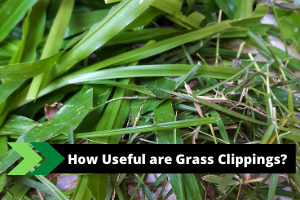Blog
Is there another use for grass clippings or should we just throw them away?
Grass Clippings: The Gardeners Green Gold
Why grass clippings?
Grass clippings are by far one of the most overlooked luxuries of the gardening world. Most people just bundle them into the big brown bins or black bags and wait anxiously for them to be taken away so that they can get the hedge trimmings in the next week. Homeowners and gardeners alike can often be seen standing on top of a mounding mountain trying to trample down the trimmings and cram as much material in as humanly possible. But in reality, grass clippings make an excellent medium for composting.
As grass clippings contain many of the same natural nutrients as fertilizers it seems silly just to throw them away. Not only will keeping them save you time and energy, they will also provide vital additives to your hungry garden like nitrogen, potassium and phosphorus.
The great thing is that all you need is patience and a small space to work. This ‘green’ material is an excellent base for any compost pile and pairs with a good balance of brown material like dried leaves. This will ensure that the pile decomposes properly. It is important to remember that aged or dried grass clippings are classed as brown material and freshly chopped clippings are ‘green’ material.
Beyond providing essential nutrients, grass clippings make a marvellous mulch for trees, bushes, shrubs and hedges in the drier months. This simple but effective practice of placing plant matter under the foliage will help cool the root zone, retain moisture and account for a small number of recycled nutrients that replenish the soil as they gradually decompose.
Composting Grass Clippings
Upon making grass clipping compost, we should observe the amounts of materials we are adding to the mix, the moisture levels and aeration. This basically means that your compost mix is not too wet and air can circulate around it, which is beneficial to the bacteria responsible for decomposing and a good balance of nutrients are retained.
Mixing Ideas
A simple mix of two brown to one green and around 5 % moisture has been very effective for me over the years, though if too much brown material is added it will take longer to break down. To help aerate the pile you can add some old shredded papers. Turning the pile on a weekly basis helps to spread the bacteria and accelerate the process, along with giving you a chance to monitor the pile’s activity. Things should be starting to get hotter to the touch as the pile starts to ‘cook’ and decomposition takes effect. Don’t be alarmed as this is just the byproduct of the bacteria’s banquet. The correct ratio of materials will also help prevent those foul smells which we all fear when we are thinking of those horrible heaps, funky farms and musty mounds that are all too common throughout the backstage basics of the gardening world.

